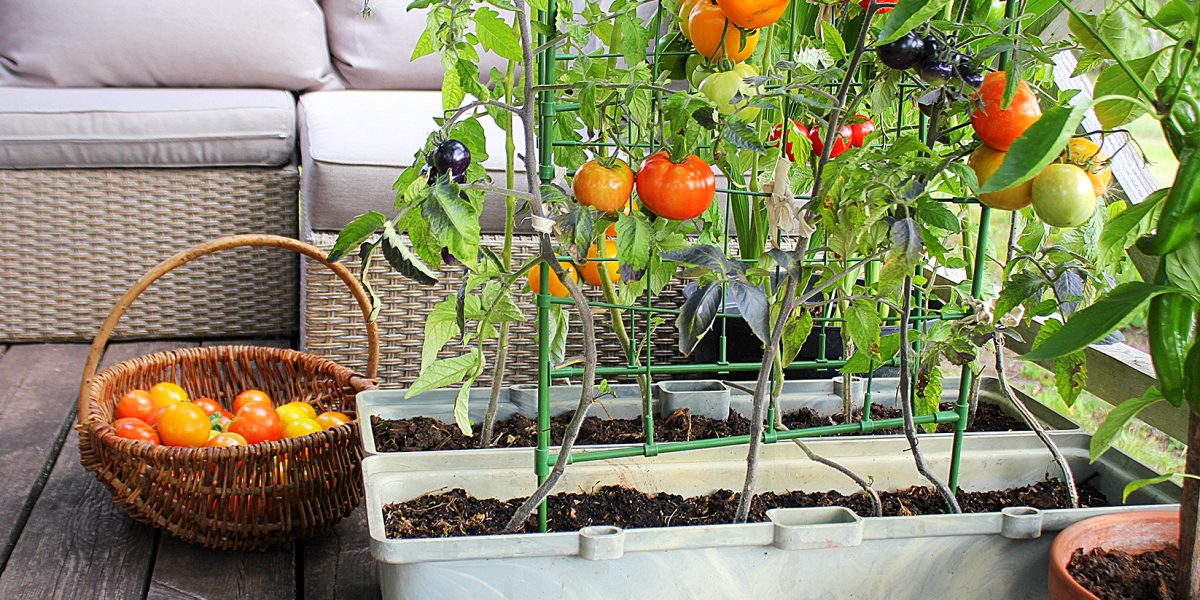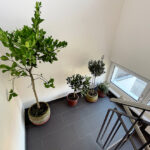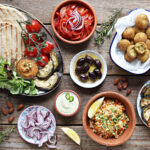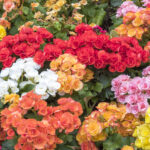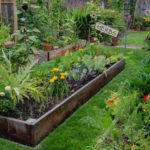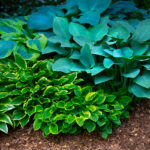Container gardening is for everyone! Perfect for beginners, gardeners looking to a do a bit less or for folks with limited space or lacking access to a garden plot. It’s also ideal for those that need their gardening to be more accessible. Containers can be moved around on plant caddies or elevated on stands and tables. Using containers to grow your favorite fruits and vegetables is such an easy way to have fresh produce at your fingertips. So, let’s get growing!
Start with the prep work
Make sure you have a spot picked out with adequate light. Most edibles require full sun (6+ hours daily sun) to produce fruit. Find a soil medium that will allow for proper drainage and don’t forget your add-ins like starter fertilizer or compost. Avoid using soil from old containers or the garden to prevent issues with disease and drainage. Make sure water is available either via a hose or a watering can. You can even set up irrigation lines if you’re feeling up to the challenge!
Next, find varieties suited for containers
Check out those plant labels or your favorite gardening website for suggestions. Smaller plants that are called out as a dwarf or more compact selection will perform best in containers. There are crops that may require support to grow as well. Stake or cage your tomatoes and peppers. Use a trellis for summer squash, beans, and peas to climb. Depending on what you decide to grow, you can have a single, large plant in a container or do a combination of smaller plants. Heck, you could even add in some flowers if you want to!
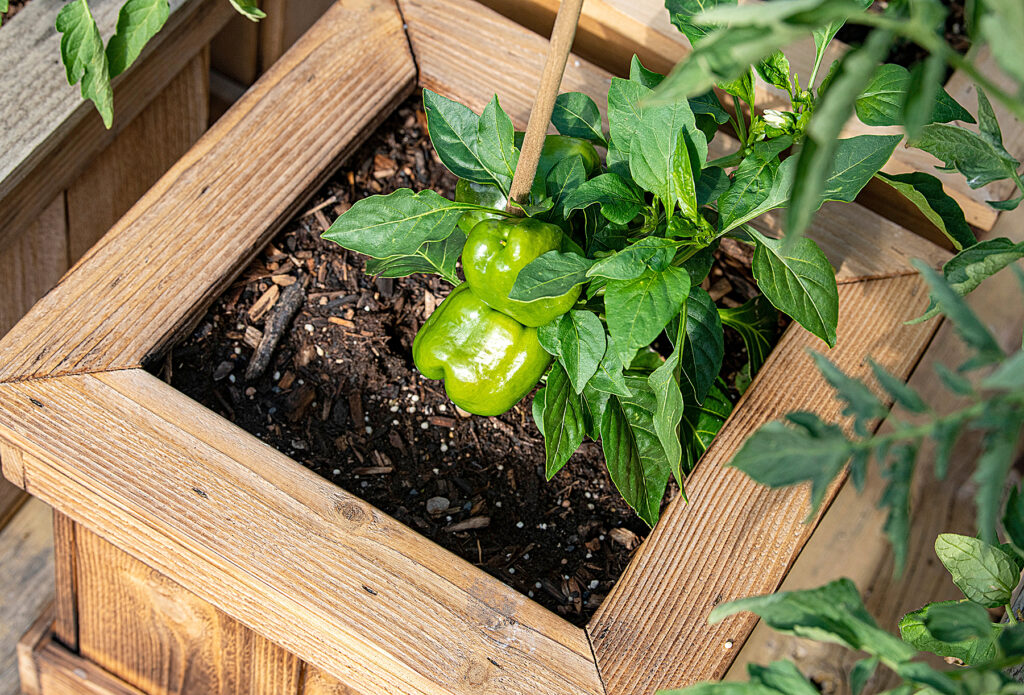
Now, let’s talk containers
You can source your containers at a local garden center or get creative with what you have around the house. Many gardeners like to repurpose household items for growing. Think 5-gallon buckets, old kitchen pots and pans, etc.…just be sure it is food safe and has proper drainage. No one likes soggy feet, including plants. Your container should be big enough to support the plant both above and below the soil. It needs to be deep enough to allow roots to spread as the season progresses. (An exception to this rule would be lettuce. You can go shallower with them.) If you are growing below ground, like carrots and potatoes, go deeper! It should also be wide enough to allow room for the plant to branch out and to add support if necessary. Certain plants, like herbs, trailing tomatoes and strawberries, can be grown in hanging baskets too.
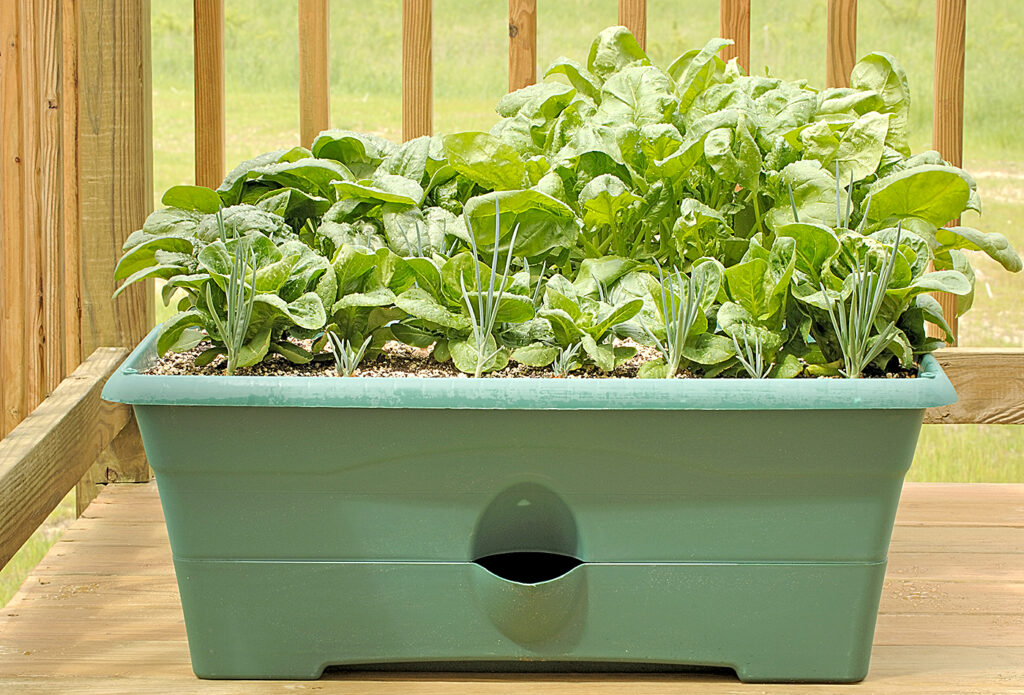
Finally, it is time to put it all together
Pot up your plants in their final location. Containers filled with soil, plants and water are significantly heavier and a pain to move. Water as needed to keep your plants happy and healthy. Keep in mind that you may need to water more in the heat of the summer as containers may dry out faster. Feed your plants, as instructed on the label, with a fertilizer formulated for edibles. Then it’s time to just sit back and watch your plants grow. Before you know it, you’ll be harvesting an abundance of fresh fruit and veggies that are ready to enjoy all season long!

